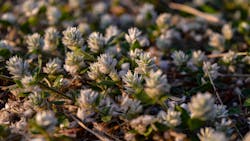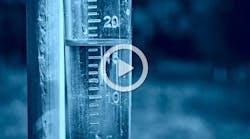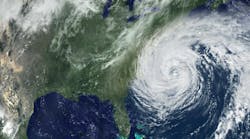Recent hurricanes potentially spread invasive species in Florida and Georgia
To help state, local and Tribal government officials, farmers, ranchers and land managers mitigate the threats from invasive species, the U.S. Geological Survey (USGS) creates flood and storm tracker maps that identify where aquatic non-native and invasive species may have been carried due to flooding associated with storms.
The maps can help natural resource managers identify potential new locations for non-native or invasive species, or to develop a watchlist of potential new introductions within a watershed.
According to USGS, invasive species are non-native species whose introduction causes or is likely to cause economic damage, environmental harm, or a risk to human health or cultural practices. Invasive species can decrease agricultural production, compete with native plants and wildlife, impair critical water infrastructure, transmit disease to wildlife and humans, threaten commercial and native fisheries, and cost governments and industries billions of dollars.
Potential spread of non-native species
The preliminary map for Hurricane Helene indicates that there are 222 possible non-native species that had the potential to spread due to storm-related flooding, of which 90 species are considered invasive and likely to spread via flood waters, said Ian Pfingsten in a press release, a botanist with USGS and one of the scientists who creates the maps.
The preliminary map for Hurricane Milton indicates 114 possible non-native species that had the potential to spread, of which 56 species are considered invasive and likely to spread via flood waters, he added.
Once a species is introduced by spreading to a new location with suitable conditions, there is a possibility of that species establishing a population in its new environment, especially for highly invasive species that are documented to rapidly grow and reproduce without the constraints from the environment where the species originated. These maps will be updated once final flooding data are available.
Given that Florida was hit by two hurricanes just weeks apart, Pfingsten said there is a lot of overlap when it comes to species that may have been spread, including many of the state’s well-known invasive species, such as the Burmese python. Some species of concern that may have been spread by these two storms include the giant applesnail and the Asian swamp eel. The giant applesnail is an agricultural pest while the swamp eel impacts populations of native species where it has established. Both species can pose a risk to human health as they are known to carry parasites.
The preliminary map for Hurricane Helene also indicates that flathead and blue catfish, a couple of large invasive predators along the coastal plains, had the potential to spread to new areas. Both species have demonstrated major food web impacts in areas where they have established, feeding on and competing with native species.
According to Pfingsten, additional species that had the potential to spread to new areas as a result of Helene include Cuban treefrogs and alligatorweed. Cuban treefrogs prey on and outcompete native frog species, impact infrastructure, and secrete a noxious chemical that can cause burning in the eyes or nose if a human handles them. Alligatorweed can clog waterways, impact infrastructure, and can lead to stagnant water that supports mosquitos breeding.
The maps are created using data from the USGS’s Nonindigenous Aquatic Species database, which is a clearinghouse of information for nationally confirmed sightings of non-native aquatic species. The NAS database, maintained by scientists at the USGS Wetland and Aquatic Research Center in Gainesville, Florida, currently has records for 1,413 non-native aquatic plants and animals across the United States and several of its territories.
The maps combine information on potential flooding associated with a storm event with known locations of established or possibly established non-native species from the NAS database. The maps identify all drainages within the flood zone that have a non-native species present or a risk of introduction from surrounding drainages.
USGS scientists then use storm tide heights, and water level and water flow data, to identify locations where waterways may have combined during flooding. Much of the coastal flooding is due to storm surge from the ocean that inundates and recedes during the storm event, while the inland flooding is attributed to precipitation accumulating in watersheds and creating high flow and water levels in major streams.
The first NAS Flood and Storm Tracker map was produced in 2017 after Hurricane Harvey made landfall in Texas and USGS experts have created at least one map each year since. Past maps created by the USGS have forecast the spread of many notorious invasive species, such as African Jewelfish, zebra mussels and water hyacinth. The maps can be viewed here.


